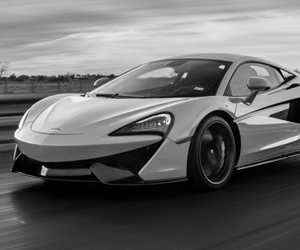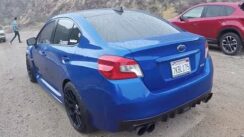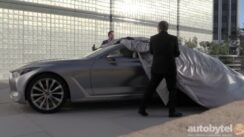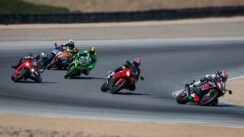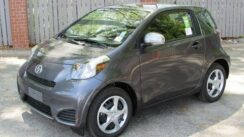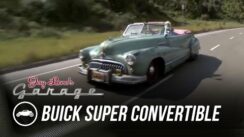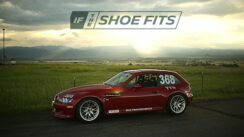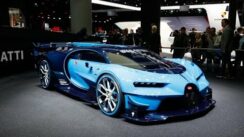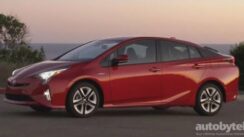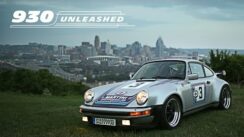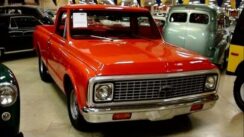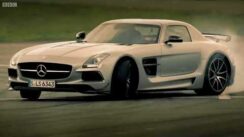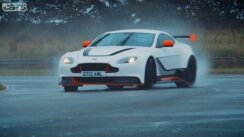Third-Gen Cadillac CTS-V Review – A Wolf in Sheep’s Clothing

In the wake of recession-era models we’d all rather just forget about, American carmakers appear to have somewhat miraculously pulled themselves up by their bootstraps. Say what you will about bailouts, but the new GM has delivered on the promise of better cars, and nowhere is it more apparent than in Cadillac’s V-series models.
These cars have been with us for more than a decade now, and they continue to impress. Not only have they demonstrated that the General has what it takes to build a sports sedan to rival the best competition from Europe — they’ve accomplished it in a way that doesn’t dilute the Cadillac brand values of luxury and class.
The Student Becomes the Master
The original CTS-V was a bit of a Kansas-City shuffle for Cadillac. With BMW, Mercedes and Audi happily catering to just about any new executive with money to spend on a hopped-up saloon car, Caddy copied the formula that had won their Teutonic rivals so much praise. Coincidentally, they did it just when the Germans saw fit to make their entire automotive doctrine “mo’ Cadillac.”
The sports-luxury segment remains a contentious one, but the original CTS-V was the car that exposed Germany’s soft underbelly. Lexus F and Jaguar R models followed suit, and now even Alfa Romeo has risen from the dead to take a shot at the throne. Among this competition, Cadillac has done the best job of actually one-upping the Europeans — not just cramping their style — and for 2017, the V is at it with renewed vigor.
Growing Into Its Skin
In the days of the first-generation CTS, Cadillac’s “art & science” design language was perhaps leaning a little too heavily in the direction of science. You can’t deny that Cadillac was unafraid to be edgy, and today’s CTS-V wears an exterior that’s edgier than ever, but also sculpted and purposeful in a way the first-generation car could never have hoped to be.
The new look is more organic than its older sibling. If GM ever hit the mark with the bad-guy Transformer design language, this car is it. Michael Bay, your Cadillac is ready. Then again, that movie’s antagonists were all about deception, and this car’s not out to hide what it can do — just take a look at the running gear.
Depress Left Pedal to Transform
Tuner types have been dropping LS motors into 3- and 5-series BMWs since before the V-series was a thing, so you can’t really blame Cadillac for taking a hint.
This car, however, is no tuner job, as a look around the rich leather-lined cockpit, replete with $2,300 Recaro bucket seats and Alcantara-lined steering wheel, will confirm. Interiors were never Caddy’s weak point, though they have at times been a little too “couch-like.” This one is decidedly not, but it never makes you suffer for the performance it offers, and it doesn’t feel like a clone of a German car, either.
Speaking of things that aren’t German, the third generation CTS-V gets its motivation from that most American of powertrains, the 640-horsepower LT4 from the Corvette Z06. In this application, the LT is mated to a weapons-grade eight-speed automatic. This combination is capable of propelling Caddy’s two-ton land beast from 0 to 60 in 3.6 seconds and on to triple digits less than three seconds later.
There is no dual-clutch option — no stick, either — and we don’t presume that will hurt Cadillac much in the sales figures. The beauty of that 6.2-liter V8 is that when you’re not in to mood for all-out mayhem, you can sail about the highway propelled by the blown LT’s abundant torque.
Corvette Engine, Cadillac Manners
Don’t be concerned about the harsh ride quality that comes with performance sedans of this sort, either. The third-gen CTS-V has magnetorheological shocks that can soften their tune to match your mood precisely in milliseconds.
How does one haul such a hefty projectile down from speed? Incredibly, not using the egregiously priced carbon-ceramic brakes that you find on much of the CTS’s competition. Rather than incur high maintenance costs and force buyers to opt-in for the trendy stoppers, GM engineers designed some of the largest iron-rotor brakes on the planet for the CTS-V — more than 15.4 inches around in the front and 14.4 in the rear.
Maybe the brake guy or the lead engineer was a Texan, because this is a have-it-all kind of vehicle, and that’s not an easy formula to get right. Here’s hoping Cadillac’s recent increase in sales isn’t just thanks to their success in China, because a few thousand of these hot-lapping American asphalt at used-car prices sounds like the best method yet to make America great again.
Cadillac CTS-V Review Pictures:
Brakes
| Type: | four-wheel disc; four-channel ABS/TCS w/ DRP; Brembo brakes with staggered six-piston calipers (front) and four-piston calipers (rear) |
| Rotor type and thickness (in / mm): |
front: 15.35 x 1.41 (390 x 36) vented, with two-piece construction; Ferritic Nitro Carburized process for corrosion resistance rear: 14.37 x 1.10 (365 x 28) vented; Ferritic Nitro Carburized process for corrosion resistance |
Engine
| 6.2L supercharged V-8 | |
| Displacement (cu in / cc): | 376 / 6162 |
| Bore & stroke (in / mm): | 4.06 x 3.62 / 103.25 x 92 |
| Block material: | cast aluminum |
| Cylinder head material: | cast aluminum |
| Valvetrain: | overhead valve, two valves per cylinder |
| Fuel delivery: | direct injection |
| Lubrication system: | wet sump |
| Compression ratio: | 10:1 |
| Horsepower (hp / kW @ rpm): |
640 / 477 @ 6400 (SAE certified) |
| Torque (lb-ft / Nm @ rpm): | 630 / 855 @ 3600 (SAE certified) |
| Max. engine speed (rpm): | 6600 |
| Recommended fuel: | premium required |
Transmission
| Hydra-Matic 8L90 | |
| Type: | paddle-shift eight-speed, electronically controlled, automatic overdrive with torque converter clutch |
| Gear ratios (:1): | |
| First: | 4.56 |
| Second: | 2.97 |
| Third: | 2.08 |
| Fourth: | 1.69 |
| Fifth: | 1.27 |
| Sixth: | 1.00 |
| Seventh: | 0.85 |
| Eighth: | 0.65 |
| Reverse: | 3.82 |
| Final drive ratio: | 2.85 |
Chassis & Suspension
| Configuration: | rear-wheel drive |
| Differential: | electronic limited-slip |
| Front suspension: | MacPherson-type with dual lower ball joints and direct-acting stabilizer bar; Magnetic Ride Control with monotube inverted struts |
| Rear suspension: | independent five-link with Magnetic Ride Control |
| Steering type: | ZF rack-mounted electric, power-assisted and variable assist |
| Steering ratio: | 15.5 (on center) to 11.2 (full lock) |
| Steering turns, lock to lock: | 2.37 |
| Turn circle (ft / m): | 40.3 / 12.3 |
| Chassis control: | four-channel StabiliTrak w/ brake assist and traction control; Performance Traction Management |
Wheels & Tires
| Wheel size and type: | 19 x 9.5-inch front / 19 x 10-inch rear aluminum |
| Tire size: | front: 265/35ZR19 Michelin Pilot Super Sport rear: 295/30ZR19 Michelin Pilot Super Sport |
Dimensions
| Wheelbase (in / mm): | 114.6 / 2910 |
| Length (in / mm): | 197.6 / 5021 |
| Height (in / mm): | 57.2 / 1454 |
| Width (in / mm): | 72.2 / 1833 |
| Track (in / mm): | front: 62.1 / 1577 rear: 61.2 / 1554 |
| Curb weight (lb / kg): | 4145 / 1880 |
| Weight distribution (% front / rear): |
52.7 / 47.3 |



























































